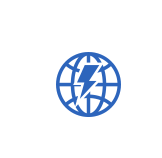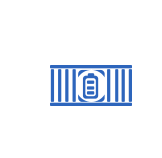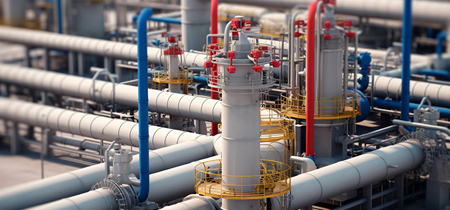Hazardous Locations Markings (continued)
Several regions have local hazardous locations (HazLoc) requirements, which can evolve over time,
making it difficult to navigate the certification landscape. Relying on one trusted source with the
expertise of explosion protection certification for both electrical and non-electrical equipment allows
you to focus on keeping the wheels of your business turning.
UL and C-UL Certifications
North America, Gulf of Mexico and other parts of the world – UL’s
certification brand is widely recognized across North America, as well
as other parts of the world.
Evaluation & Testing:
• Ordinary Location/Safe Area Requirements – Certification for risks
associated with shock, fire and personal injury.
• Hazardous Location/Explosion Protection Requirements –
Certification based on area classification and explosion protection
methods for either Division or Zone installations. A hazardous
locations certified product must comply with both ordinary
location and hazardous locations requirements in accordance with
US ANSI and CAN Standards.
Production Control:
• In accordance OSHA and SCC regulations, four productioninspections per year at a minimum.
European Union ATEX Certification
Hazardous locations or Explosion protected equipment intended for
installation in the European Union must comply with the ATEX directive,
European Directive 2014/34/EU, The ATEX directive ensures the free
movement of goods throughout the European Union by harmonizing
compliance procedures.
UL is an accredited Notified Body and Ex Testing Laboratory for
equipment based on the 60079 and 13463 series of standards.
Evaluation & Testing:
• Ordinary Location/Safe Area Requirements - The CE mark is a selfdeclaration marking indicating that equipment conforms to applicable
directives which vary depending on the product type. UL can assist in
preparing a technical file to demonstrate compliance and declaration
of conformity.
• Hazardous Locations/Explosion Protection Requirements – The ATEX product marking demonstrates compliance to the ATEX
directive as follows:
- Essential health and safety is covered in the Annex II of the ATEX directive, requiring manufacturers to establish principles of integrated
explosion safety from all electrical and non-electrical ignition sources. Demonstrating compliance to these requirements is done by
following the harmonized European standard series EN 13463.
- EU Type Examination Certificate for Category 1 (electrical and mechanical) and Category 2 (electrical) equipment requires a Notified
Body verifies equipment has met the relevant applicable provisions of the ATEX directive to issue an EC Type Examination Certificate.
For Category 2 (mechanical) and Category 3 (electrical and mechanical), an EC Type Examination Certificate is not required; however,
manufacturers may self-declare conformity which can be validated by UL.
Production Control:
• Quality Assessment in accordance with EN ISO/IEC 80079-34 is required by the directive for the facilities producing equipment
which will result in a Notified Body issuing a Quality Assurance Notification (QAN). Audits are required every 18 months.
IECEx System
The IECEx System is intended to facilitate international trade for equipment
and services used in explosive atmospheres, while maintaining required levels
of safety and is a data exchange program. Certification is based on the 60079
and 80079 series of standards.
UL is approved under the IECEx system as an Ex Certification Body (ExCB)
and Ex Testing Laboratory (ExTL) for equipment, services facilities, and mark
licensing based on the 60079 and 80079 series of standards facilitated by
TC31 committee.
Evaluation & Testing:
• IECEx Certification and marking is based on the IEC 60079 and ISO 80079
series of standards.
Production Control:
• Quality Assessment in accordance with ISO/IEC 80079-34 is required for the facilities producing equipment which will result in ExCB
issuing a Quality Assessment Report (QAR).
Why choose UL?
With over 100 years of experience in explosion protection, UL drives global research and standards to continually advance and meet
ever-evolving product safety, performance and interoperability needs. UL’s global network of technical experts and state-of-the-art
facilities, along with our longstanding relationships with regulatory authorities, partner laboratories and industry technical leaders,
helps manufacturers gain the compliance credentials they need to compete in a more complex global supply chain.
Knowledge You Can Trust – our experienced staff will advise you from the initial design stage of product development through testing
and production. Our experts can assist you in understanding the certification requirements for your specific markets. UL Hazardous
Locations Engineering staff participate and lead over 31 standards writing committees and are working with industry to develop and
maintain safe standards.
Speed & Efficiency – our cost-effective systems and state-of-the-art facilities cut through the red tape and help accelerate your time to
market. ATEX certificates are online 24/7 for your convenience.
Single Source Provider – UL meets all of your compliance needs and, by bundling safety, performance and interoperability services, also
helps save you valuable time and money.
Global Reach & Access – our global network of expert engineers helps you understand the various national and global requirements
for your specific market application.
 UL Automatic Control Cabinet
UL Automatic Control Cabinet
 UL Medium And High Voltage Switchgear
UL Medium And High Voltage Switchgear
 UL Low voltage switchgear
UL Low voltage switchgear
 UL distribution cabinet
UL508A Control Cabinet UL-UPS System UL Explosion-proof Cabinet UL High Voltage Frequency Converter Cabinet UL High Pressure Soft Start CabinetUL Medium Pressure Air Insulated Switchgear UL Medium Pressure Gas Insulated Switchgear UL Ultra-thin wind power switchgear UL Medium and high voltage motor control Center UL Railway power supply medium and high voltage switchgear
UL distribution cabinet
UL508A Control Cabinet UL-UPS System UL Explosion-proof Cabinet UL High Voltage Frequency Converter Cabinet UL High Pressure Soft Start CabinetUL Medium Pressure Air Insulated Switchgear UL Medium Pressure Gas Insulated Switchgear UL Ultra-thin wind power switchgear UL Medium and high voltage motor control Center UL Railway power supply medium and high voltage switchgear











